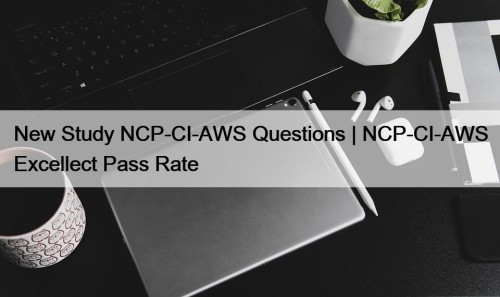Most Popular
 Exams CWAP-404 Torrent & Exam CWAP-404 Lab Questions
Exams CWAP-404 Torrent & Exam CWAP-404 Lab Questions
BONUS!!! Download part of Pass4training CWAP-404 dumps for free: https://drive.google.com/open?id=142PUvmwIZT7S4LmpGvBwOji13ekmWE5ZHow ...
 100% Pass 2025 Perfect SMI300XE: Exam MI300X Expert (SMI300XE) Certification Exam Passing Score
100% Pass 2025 Perfect SMI300XE: Exam MI300X Expert (SMI300XE) Certification Exam Passing Score
To help you learn with the newest content for the ...
 New Study NCP-CI-AWS Questions | NCP-CI-AWS Excellect Pass Rate
New Study NCP-CI-AWS Questions | NCP-CI-AWS Excellect Pass Rate
BTW, DOWNLOAD part of Pass4Leader NCP-CI-AWS dumps from Cloud Storage: ...



Reliable Pdf DP-300 Format & Passing DP-300 Exam is No More a Challenging Task

P.S. Free & New DP-300 dumps are available on Google Drive shared by PDFBraindumps: https://drive.google.com/open?id=19Tayjx6PCCchML_yUjF4Qh9Mq1Kvp2dA
Our DP-300 learning quiz can be downloaded for free trial before purchase, which allows you to understand our sample questions and software usage. It will also enable you to make a decision based on your own needs. And we have organized a group of professionals to revise our DP-300 Preparation materials, according to the examination status and trend changes. The simple and easy-to-understand language of DP-300 exam questins frees any learner from studying difficulties.
The DP-300 Exam covers a wide range of topics related to Azure database administration, such as configuring and monitoring databases, managing security and access, backing up and restoring databases, and optimizing database performance. It also covers advanced features like implementing high availability and disaster recovery solutions, automating database management tasks, and integrating Azure with other Microsoft services. With the growing demand for cloud-based database solutions, DP-300 exam is becoming increasingly popular among IT professionals who want to enhance their career prospects.
The DP-300 certification is ideal for database administrators, database developers, and data engineers who want to demonstrate their expertise in managing and maintaining relational databases on the Azure platform. Administering Relational Databases on Microsoft Azure certification validates the candidate's ability to manage and secure database environments, troubleshoot common issues, and optimize database performance for maximum efficiency. It is also a great way to showcase your skills and expertise to potential employers and advance your career in the field of database management.
Achieving the DP-300 Certification demonstrates to employers and clients that you have the skills and knowledge required to effectively manage databases on the Azure cloud platform. Administering Relational Databases on Microsoft Azure certification can lead to career advancement opportunities and increased earning potential. Additionally, as more organizations move their databases to the cloud, the demand for skilled Azure database administrators is expected to continue to grow in the coming years.
Free PDF 2025 DP-300 - Pdf Administering Relational Databases on Microsoft Azure Format
With the DP-300 exam, you will harvest many points of theories that others ignore and can offer strong prove for managers. So the DP-300 exam is a great beginning. However, since there was lots of competition in this industry, the smartest way to win the battle is improving the quality of our DP-300 Learning Materials, which we did a great job. With passing rate up to 98 to 100 percent, you will get through the DP-300 exam with ease.
Microsoft Administering Relational Databases on Microsoft Azure Sample Questions (Q81-Q86):
NEW QUESTION # 81
You have the following Transact-SQL query.
Which column returned by the query represents the free space in each file?
- A. ColumnA
- B. ColumnC
- C. ColumnB
- D. ColumnD
Answer: B
Explanation:
Example:
Free space for the file in the below query result set will be returned by the FreeSpaceMB column.
SELECT DB_NAME() AS DbName,
name AS FileName,
type_desc,
size/128.0 AS CurrentSizeMB,
size/128.0 - CAST(FILEPROPERTY(name, 'SpaceUsed') AS INT)/128.0 AS FreeSpaceMB FROM sys.database_files WHERE type IN (0,1); Reference:
https://www.sqlshack.com/how-to-determine-free-space-and-file-size-for-sql-server-databases/
NEW QUESTION # 82
What should you do after a failover of SalesSQLDb1 to ensure that the database remains accessible to
SalesSQLDb1App1?
- A. Update the users in SalesSQLDb1.
- B. Update the firewall rules of SalesSQLDb1.
- C. Configure SalesSQLDb1 as writable.
- D. Update the connection strings of SalesSQLDb1App1.
Answer: B
Explanation:
Section: [none]
Explanation:
Scenario: SalesSQLDb1 uses database firewall rules and contained database users.
Testlet 2
Case study
This is a case study. Case studies are not timed separately. You can use as much exam time as you
would like to complete each case. However, there may be additional case studies and sections on this exam.
You must manage your time to ensure that you are able to complete all questions included on this exam in the
time provided.
To answer the questions included in a case study, you will need to reference information that is provided in the
case study. Case studies might contain exhibits and other resources that provide more information about the
scenario that is described in the case study. Each question is independent of the other questions in this case
study.
At the end of this case study, a review screen will appear. This screen allows you to review your answers and to
make changes before you move to the next section of the exam. After you begin a new section, you cannot
return to this section.
To start the case study
To display the first question in this case study, click the Next button. Use the buttons in the left pane to explore
the content of the case study before you answer the questions. Clicking these buttons displays information such
as business requirements, existing environment, and problem statements. If the case study has an All
Information tab, note that the information displayed is identical to the information displayed on the subsequent
tabs. When you are ready to answer a question, click the Question button to return to the question.
Overview
Existing Environment
Contoso, Ltd. is a financial data company that has 100 employees. The company delivers financial data to
customers.
Active Directory
Contoso has a hybrid Azure Active Directory (Azure AD) deployment that syncs to on-premises Active
Directory.
Database Environment
Contoso has SQL Server 2017 on Azure virtual machines shown in the following table.
SQL1 and SQL2 are in an Always On availability group and are actively queried. SQL3 runs jobs, provides
historical data, and handles the delivery of data to customers.
The on-premises datacenter contains a PostgreSQL server that has a 50-TB database.
Current Business Model
Contoso uses Microsoft SQL Server Integration Services (SSIS) to create flat files for customers. The
customers receive the files by using FTP.
Requirements
Planned Changes
Contoso plans to move to a model in which they deliver data to customer databases that run as platform as a
service (PaaS) offerings. When a customer establishes a service agreement with Contoso, a separate resource
group that contains an Azure SQL database will be provisioned for the customer. The database will have a
complete copy of the financial data. The data to which each customer will have access will depend on the
service agreement tier. The customers can change tiers by changing their service agreement.
The estimated size of each PaaS database is 1 TB.
Contoso plans to implement the following changes:
* Move the PostgreSQL database to Azure Database for PostgreSQL during the next six months.
* Upgrade SQL1, SQL2, and SQL3 to SQL Server 2019 during the next few months.
* Start onboarding customers to the new PaaS solution within six months.
Business Goals
Contoso identifies the following business requirements:
* Use built-in Azure features whenever possible.
* Minimize development effort whenever possible.
* Minimize the compute costs of the PaaS solutions.
* Provide all the customers with their own copy of the database by using the PaaS solution.
* Provide the customers with different table and row access based on the customer's service agreement.
* In the event of an Azure regional outage, ensure that the customers can access the PaaS solution with
minimal downtime. The solution must provide automatic failover.
* Ensure that users of the PaaS solution can create their own database objects but he prevented from
modifying any of the existing database objects supplied by Contoso.
Technical Requirements
Contoso identifies the following technical requirements:
* Users of the PaaS solution must be able to sign in by using their own corporate Azure AD credentials or
have Azure AD credentials supplied to them by Contoso. The solution must avoid using the internal Azure
AD of Contoso to minimize guest users.
* All customers must have their own resource group, Azure SQL server, and Azure SQL database. The
deployment of resources for each customer must be done in a consistent fashion.
* Users must be able to review the queries issued against the PaaS databases and identify any new objects
created.
* Downtime during the PostgreSQL database migration must be minimized.
Monitoring Requirements
Contoso identifies the following monitoring requirements:
* Notify administrators when a PaaS database has a higher than average CPU usage.
* Use a single dashboard to review security and audit data for all the PaaS databases.
* Use a single dashboard to monitor query performance and bottlenecks across all the PaaS databases.
* Monitor the PaaS databases to identify poorly performing queries and resolve query performance issues
automatically whenever possible.
PaaS Prototype
During prototyping of the PaaS solution in Azure, you record the compute utilization of a customer's Azure SQL
database as shown in the following exhibit.
Role Assignments
For each customer's Azure SQL Database server, you plan to assign the roles shown in the following exhibit.
NEW QUESTION # 83
You have a database named db1.
The log for db1 contains the following entry.
You need to ensure That db1 can process transactions.
Answer:
Explanation:
NEW QUESTION # 84
Your on-premises network contains a server that hosts a 60-TB database named DB 1. The network has a
10-Mbps internet connection.
You need to migrate DB 1 to Azure. The solution must minimize how long it takes to migrate the database.
What should you use?
- A. Data Migration Assistant (DMA)
- B. Azure Migrate
- C. Azure Database Migration Service
- D. Azure Data BOX
Answer: D
Explanation:
https://www.techtarget.com/searchitoperations/tip/Easily-transfer-VMs-to-the-cloud-with-Microsoft-Azure-Migr
NEW QUESTION # 85
You need to design an analytical storage solution for the transactional data. The solution must meet the sales transaction dataset requirements.
What should you include in the solution? To answer, select the appropriate options in the answer area.
NOTE: Each correct selection is worth one point.
Answer:
Explanation:
Explanation
Graphical user interface, text, application Description automatically generated
Box 1: Hash
Scenario:
Ensure that queries joining and filtering sales transaction records based on product ID complete as quickly as possible.
A hash distributed table can deliver the highest query performance for joins and aggregations on large tables.
Box 2: Round-robin
Scenario:
You plan to create a promotional table that will contain a promotion ID. The promotion ID will be associated to a specific product. The product will be identified by a product ID. The table will be approximately 5 GB.
A round-robin table is the most straightforward table to create and delivers fast performance when used as a staging table for loads. These are some scenarios where you should choose Round robin distribution:
When you cannot identify a single key to distribute your data.
If your data doesn't frequently join with data from other tables.
When there are no obvious keys to join.
Reference:
https://rajanieshkaushikk.com/2020/09/09/how-to-choose-right-data-distribution-strategy-for-azure-synapse/
NEW QUESTION # 86
......
If you still have questions with passing the exam, choose us, and we will help you pass the exam successfully. Our DP-300 training materials contain the both the questions and answers. You can have a practice through different versions. If you prefer to practice on paper, then DP-300 Pdf Version will satisfy you. If you want to have a good command of the DP-300 exam dumps, you can buy all three versions, which can assist you for practice.
Valid DP-300 Test Prep: https://www.pdfbraindumps.com/DP-300_valid-braindumps.html
- High praised DP-300 exam guide: Administering Relational Databases on Microsoft Azure present you superb practice dumps - www.passtestking.com 💛 Go to website 《 www.passtestking.com 》 open and search for ⮆ DP-300 ⮄ to download for free 🎍New DP-300 Test Syllabus
- Latest DP-300 Test Labs 🧡 New DP-300 Test Syllabus 🎢 Latest DP-300 Test Labs 🎴 The page for free download of ➡ DP-300 ️⬅️ on ⏩ www.pdfvce.com ⏪ will open immediately 📽Latest DP-300 Exam Guide
- Valid DP-300 Test Objectives 🏳 New DP-300 Exam Duration 🗽 New DP-300 Exam Duration 🛕 Search for [ DP-300 ] on ➠ www.dumps4pdf.com 🠰 immediately to obtain a free download 🕤Latest DP-300 Exam Guide
- 2025 Pdf DP-300 Format | Efficient 100% Free Valid Administering Relational Databases on Microsoft Azure Test Prep 💔 Go to website ➽ www.pdfvce.com 🢪 open and search for 【 DP-300 】 to download for free 🦋DP-300 Valid Exam Tips
- High praised DP-300 exam guide: Administering Relational Databases on Microsoft Azure present you superb practice dumps - www.passcollection.com 🔂 Search for ➤ DP-300 ⮘ on 【 www.passcollection.com 】 immediately to obtain a free download 🔐Reliable DP-300 Test Online
- Quiz Microsoft - DP-300 Perfect Pdf Format 🍰 Open ▛ www.pdfvce.com ▟ and search for 「 DP-300 」 to download exam materials for free 👦DP-300 Book Free
- DP-300 Study Materials - DP-300 Actual Exam - DP-300 Test Dumps 🤘 Immediately open “ www.passtestking.com ” and search for 「 DP-300 」 to obtain a free download 🍳Exam DP-300 Tests
- Valid Study DP-300 Questions ⏏ Valid DP-300 Test Objectives 🐣 Valid Study DP-300 Questions 😼 Immediately open ➡ www.pdfvce.com ️⬅️ and search for ➠ DP-300 🠰 to obtain a free download ☘DP-300 Vce Download
- DP-300 Study Materials - DP-300 Actual Exam - DP-300 Test Dumps 🔈 Search for { DP-300 } and download it for free immediately on ( www.itcerttest.com ) 🌮DP-300 Passing Score Feedback
- Pass Guaranteed Quiz 2025 Professional Microsoft Pdf DP-300 Format 🕑 Download ☀ DP-300 ️☀️ for free by simply searching on { www.pdfvce.com } 🥫DP-300 Latest Mock Test
- Pass Guaranteed Quiz 2025 Professional Microsoft Pdf DP-300 Format 🌴 Go to website ➥ www.pdfdumps.com 🡄 open and search for ▷ DP-300 ◁ to download for free 🎱Clear DP-300 Exam
- DP-300 Exam Questions
- skillhack.online akmbiologylectures.com sophiam889.glifeblog.com www.sureprice.click manucomputer.shop abigail473.blogozz.com tutr.online swift-tree.dev techwitsclan.com nativemediastudios.com
DOWNLOAD the newest PDFBraindumps DP-300 PDF dumps from Cloud Storage for free: https://drive.google.com/open?id=19Tayjx6PCCchML_yUjF4Qh9Mq1Kvp2dA
Tags: Pdf DP-300 Format, Valid DP-300 Test Prep, DP-300 Practical Information, DP-300 Dumps PDF, DP-300 Exam Pass Guide